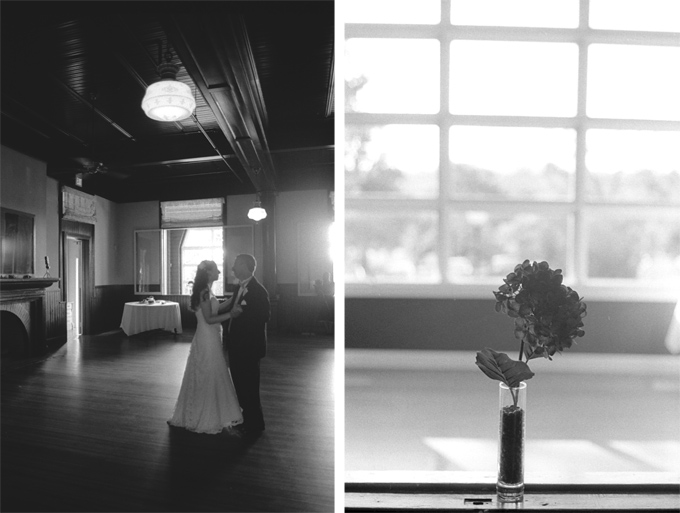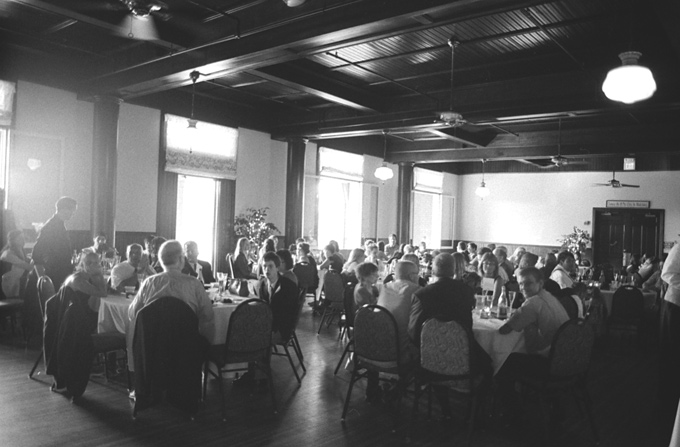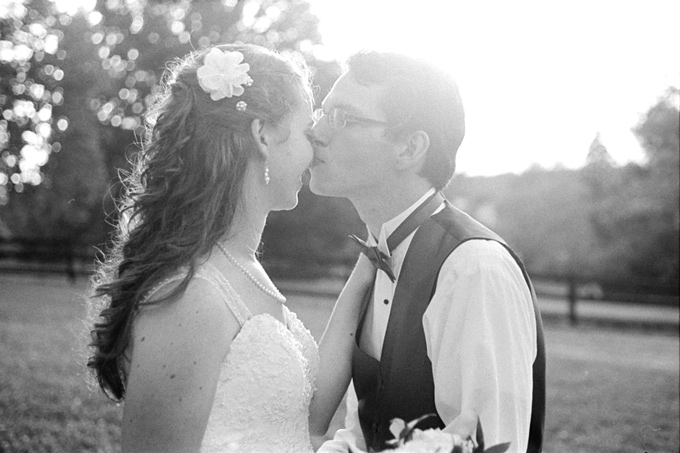
I’m subscribed to a youtube channel called The Art of Photography, and last week the host, Ted Forbes, did an episode on the “minimalist darkroom”. In the episode, Ted illustrated just how uncomplicated it can be to develop your own black and white film. You need the following: film, tank, developer, fixer(special fixer called TF4 eliminates stopper), distilled water, various used bottles, thermometer, a timer, scissors, can opener, and clothespins. I went ahead and ordered some supplies. Yesterday was a red letter day. My shipment of Rodinal black and white film developer came a day early, so I got down to business.
The Process
I decided to develop some Kodak 400 Tri-X, my second roll ever. Most of the images were from Zak and Laura’s Wedding captured with a Pentax ME Super utilizing a Pentax 50mm f/2.0 and Takumar 28mm f/2.8.
I chose the Paterson Super System 4 Universal Developing tank. It can take two rolls of 35mm, or one roll of 120mm, and various combinations of other formats that I’m not familiar with.
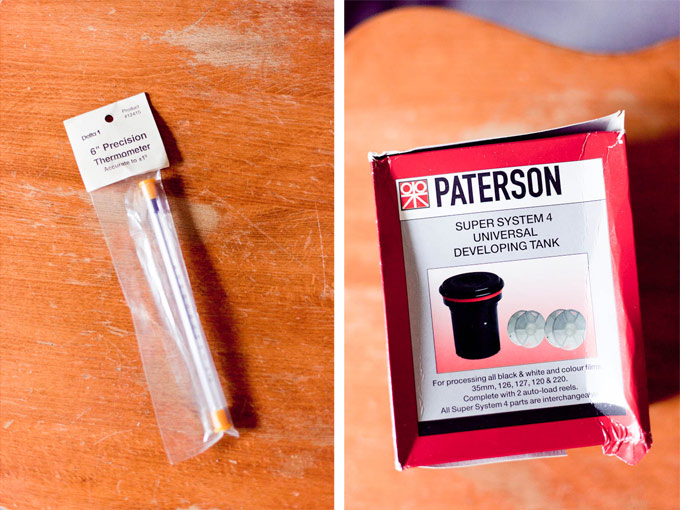
The Adox Adonal on the right uses one of the oldest recipes for developer still in production, Rodinal. To make a working developer solution, I mixed one part Rodinal with seventy-five parts distilled water. The Photographers Formulary TF4 Fixer on the left is a very unique fixer, as it doesn’t agree with most stop baths, so instead of using a stopper, you can just wash with distilled water for one minute. The TF4 was mixed with distilled water with a ratio of 1:3. One part fixer, three parts water.
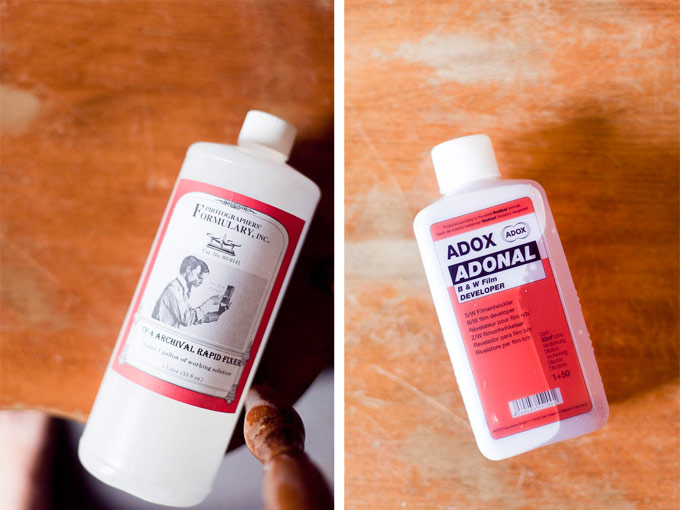
I used old seltzer bottles for diluting, chilling, and pouring.
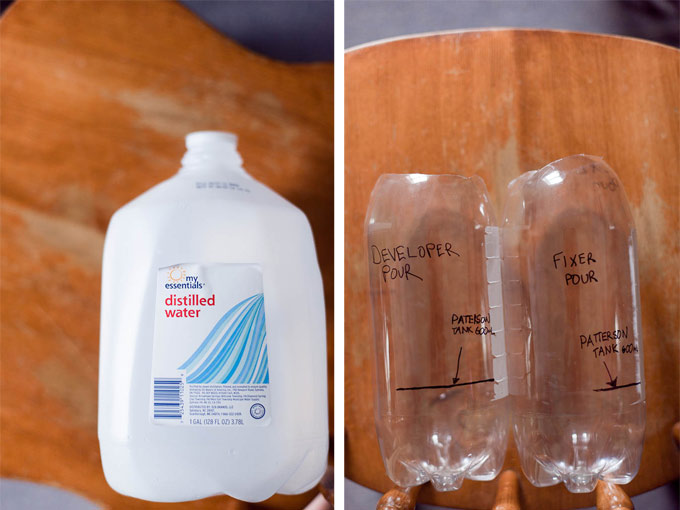
The Rodinal is mixed on demand, but the fixer can be stored. I wasn’t sure how light would affect the solution, so I duct taped the seltzer bottle.
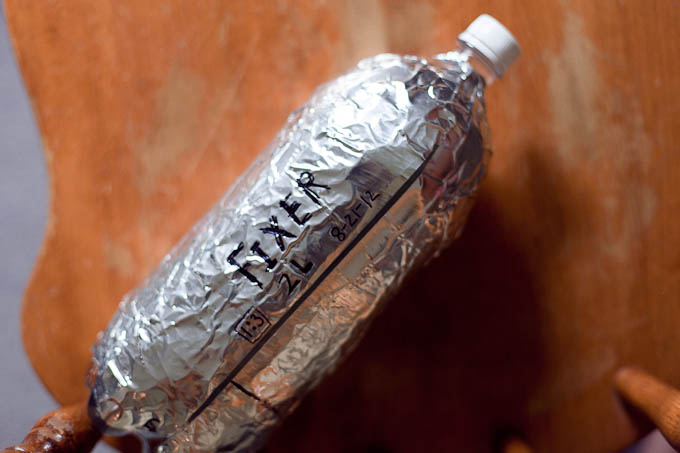
About loading the film onto the reel: practice, practice, practice. Practice with your eyes closed, practice in the dark, repeat many times. Once the canister is pried open in the darkroom, there’s really no turning back without ruining the film if you can’t get it on the reel.
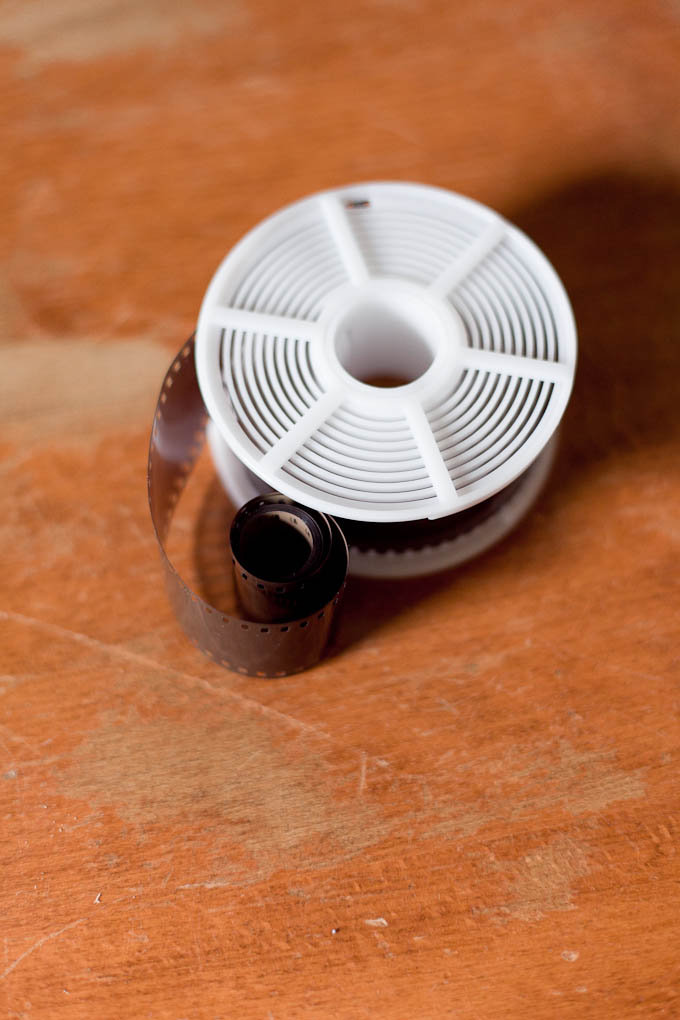
I prepared an apparatus for hanging the developed film to dry. Its near the shower to reduce dust. To further exaggerate this, I ran the shower on hot for a few minutes before developing the film. The humidity makes stray dust particles heavy and they fall to the floor. In the end, it turned out that the 36 exposure film would reach the floor, so I had to make another rig on the fly.
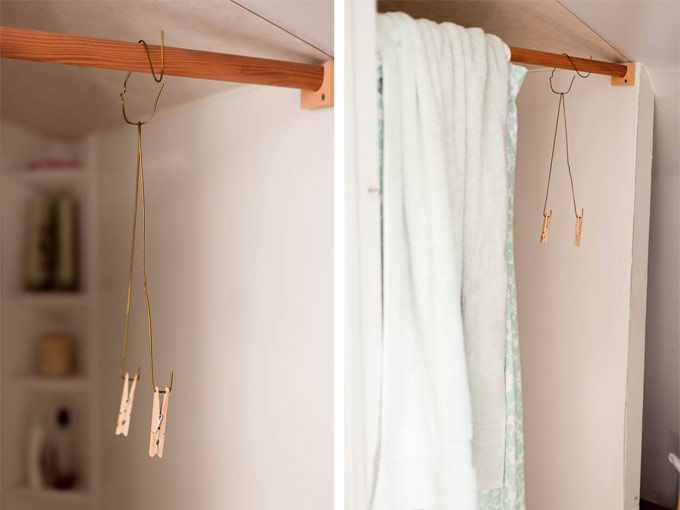
The chemicals and some distilled water just chilling. . .down to 68 degrees Fahrenheit.
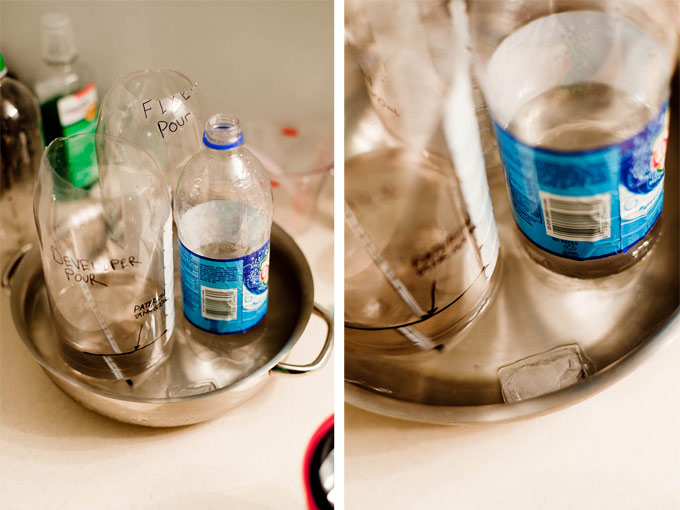
After fumbling around in the dark for several scary minutes, the deed was done. I successfully loaded the film onto the reel and sealed the tank. The Paterson tank (many other tanks are like this too) is light tight once the funnel is locked into place. This is very convenient. The lights can be turned on when pouring the chemicals.
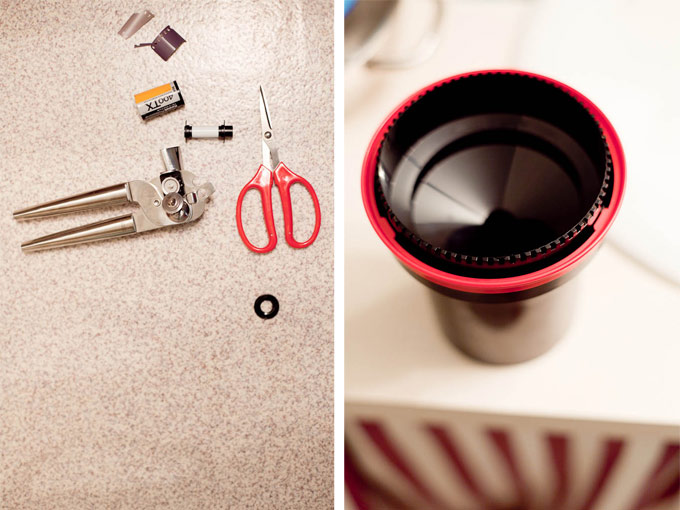
I made a list. You can see how simple this process really is.
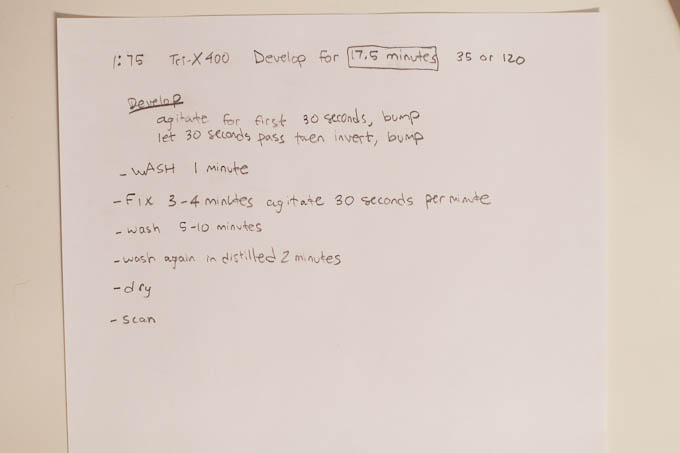
The developing time when the Rodinal is at 1:75 dilution is 17.5 minutes for TX400. I found this data on The Massive Development Chart. Really easy, just select the developer and film and follow the chart for different ASA speed ratings.
Once the developer is poured in, start the timer and aggitate(invert repeatedly) the tank for thirty seconds. After thirty seconds, bump the tank against the counter a few times to knock out air bubbles on the film and let stand. The instructions then said to invert once every thirty seconds. I made sure to bump the tank after every inversion.
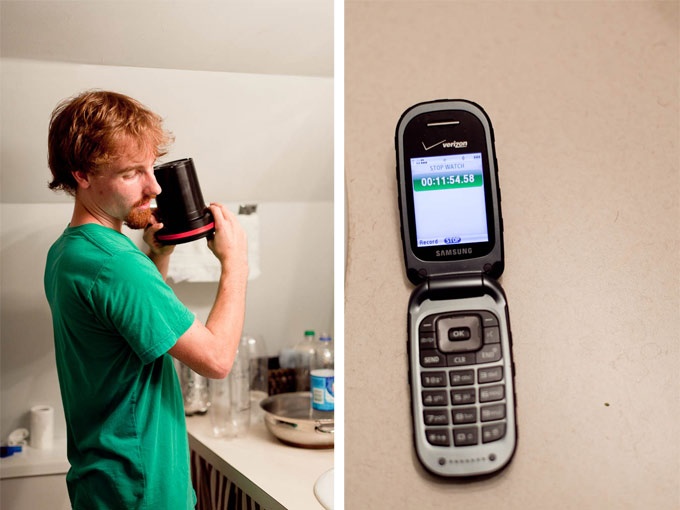
I skipped a few steps in photos. At 17.25 minutes, I poured out the developer and filled the tank with 68 degree F distilled water. I then agitated constantly for 50 seconds and dumped the water out. After the wash, I poured in the TF4 fixer solution and agitated for thirty seconds every minute for 3.5 minutes, then poured the fixer back into the storage bottle (fixer can be reused a few times). The photo below shows the semi-final wash. Basically, I let a weak stream of tap water wash the film for about ten minutes, dumping the tank out every few minutes and letting it refill.
Before removing the film, I washed once more with distilled water to make sure the film was clean.
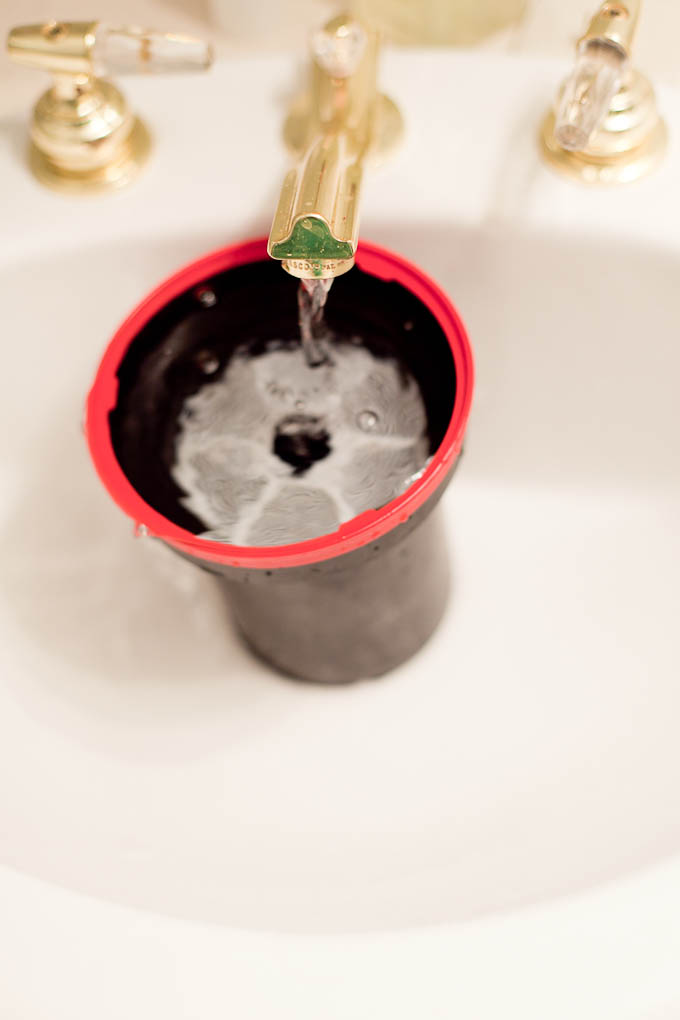
And there it is hanging up! The purple tint is from the developer. It faded as the film dried, though some still remains. I think next time I’ll fix for longer.
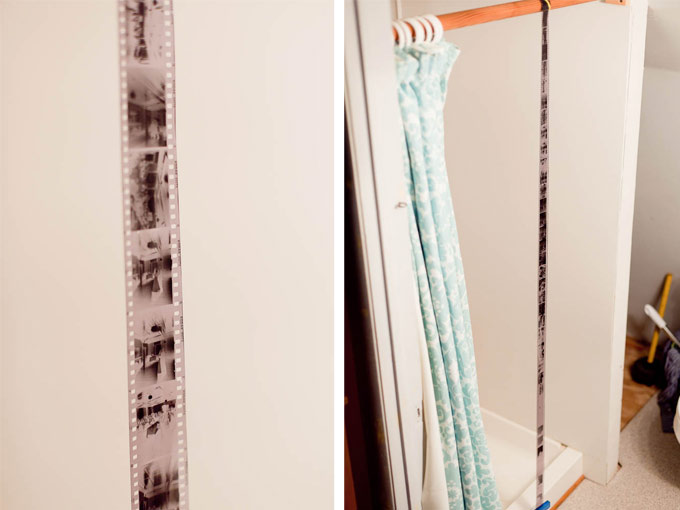
The Results
Below are some of my favorite images from this roll, scanned on an Epson Styles RX500. I think they turned out great!

